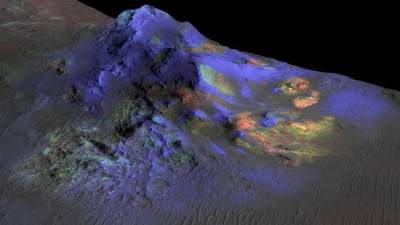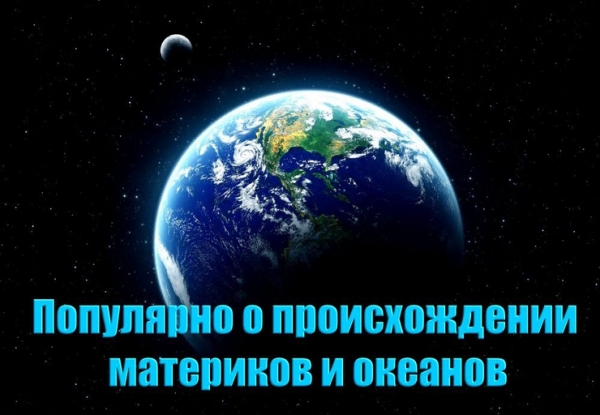
The question of the formation of oceans and continents on planet Earth is the matter forming the earth’s crust and lithosphere. The primary crust of our planet was the result of cooling and solidification of the primary magma ocean 4.5 billion years ago covered the entire planet with a layer of power, probably in the tens of kilometers.
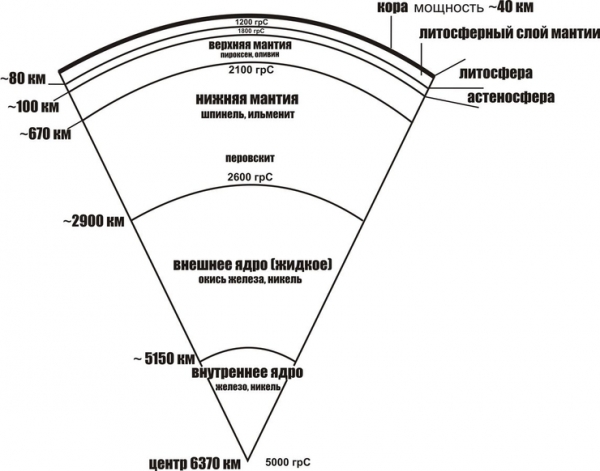
For 200-300 million years before the emergence of the first magmatic melts, the Earth was on average homogeneous mineralogical composition of the solid ball, is not divided into shell. Under the action of pressure and decay of radioactive elements raised the temperature in the Central parts of the planet, but the temperature has not reached the limits, after which starts the melting of rocks. The melting of the earth’s substance, contributed largely to the tidal influence of the moon. In those ancient times the Moon was much closer to the Ground, and the impact of the lunar tides was expressed in the form of a huge swelling height up to 1km migrating along earth’s surface after the moon rotating around the Earth. The pull of the moon was the decisive factor in the initial increase of the temperature of the surface layer of the Earth that ultimately led to the launch of tectonic processes and complex paleogeographic evolution of planet Earth.
The primary melting rock eventually covered the entire surface of the planet, but in those days of the breed, despite its very high temperatures of up to 2000 degrees C, could not become liquid deeper than 400 km due to high pressure at these depths. Despite its largely solid state, in the bowels of the started processes of convection move earth’s substances, when solid, but very plastic substance begins to rise up and cooled in near-surface conditions, begins to descend. Convection gradually covered the entire Earth’s volume. Liquid in the magma ocean convective processes, of course have been much faster, so much so that barely solidified primary bark were cracked with new batches of ascending magma jets and was fascinated at the depth where the pieces of bark once again been subjected to melting.
Magma is a melt of various compounds with silica (SiO2) and fluid – dissolved gases and liquids (mainly water). Magma penetrates into the crust from the mantle, but can be formed inside the crust.
Depending on conditions, but rather the depth of solidification of magma, igneous rocks form two types of rocks – effusive and Intrusive. Sedimentary-volcanic rocks, that is up in the air, the products of volcanic eruptions, occupy an intermediate position between magmatic and sedimentary rocks.
Intrusive rocks (intrusions) are formed most often at depths of more than 3km, where magma slowly cools, and the minerals have enough time for crystallization. Mineral grains Intrusive rocks grow to visible size and the breed becomes holocrystalline structure. Depending on the percentage content of silica (silicon oxide) Intrusive rocks are classified into acidic – granite; medium – diorite; basic – gabbro, anorthosite; ultramafic – peridotite, pyroxenite. In this series the content of quartz in the rocks is reduced, while the content of mafic minerals and the density increases. Granit – light, though white breed, whereas the peridotite is already greenish-black.
Effusive rocks (effusive rocks) are formed from the same magma, and Intrusive rocks. The difference between them lies in the depth of hardening of the initial magmatic melt. The effusive rocks (volcanics) is the magma that solidified at shallow depths or poured out on the earth’s surface in the form of lava, therefore, as a rule, their crystallization took place at lower temperatures. The main difference between the two breeds lies in their structure. The magma from which the rocks crystallized, were closer to the earth’s surface and cooled faster than the magma from which crystallized intrusions. The minerals of effusive rocks had less time for growth (crystallization). The main part of the crystals effusions eye not distinguishable and only the individual crystals grow to sizes is quite visible. Some of the lava poured out on the surface cools so fast that crystals do not have time to occur at all, and the breed becomes amorphous form, and then formed volcanic glass. Effusive rocks are classified into acidic – rhyolite, dacite; medium – andesite; major – basalt; and ultrabasic – picrite. The density in this series increases, and the content of silicon oxide decreases similarly to a number of Intrusive rocks. Effusive (volcanic) rocks, and Intrusive, with decreasing quartz content become darker and heavier. All the effusive rocks have their counterpart among Intrusive rocks.
Intrusion refers to the process of deep of magma intrusion or the introduction of rigid Intrusive body at any depth. Effuse – subsurface introduction of magma and eruptions of lava.
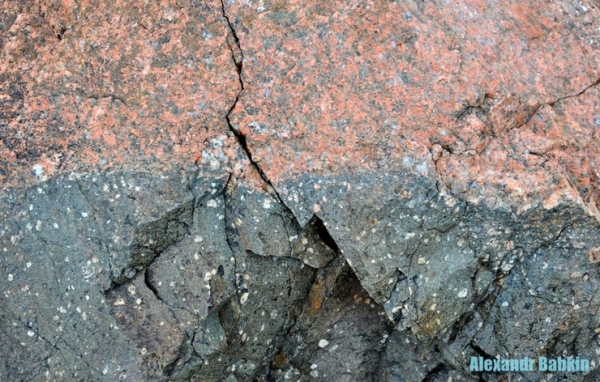
Igneous contact after introduction of the acidic rhyolite lavas Carboniferous period (300 million years) granites of Ordovician period (450 million years). South-East Kazakhstan. Photo Alexander Babkin
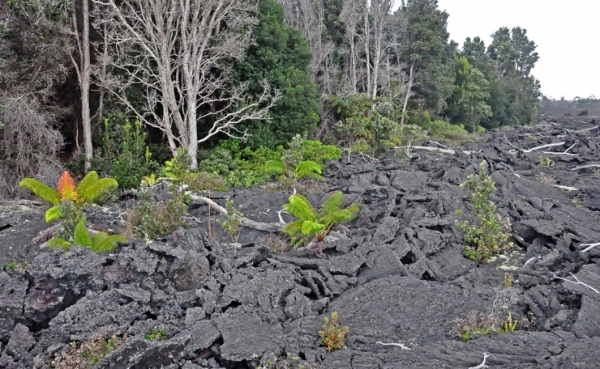
Flows of basalt lava periodically destroy the forest on the island of Hawaii. Photo Alexander Babkin
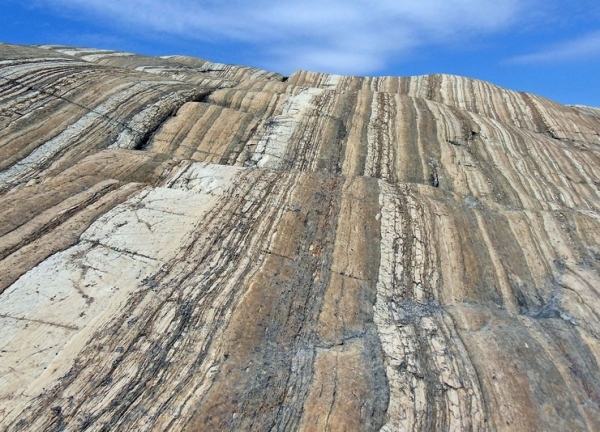
The gneiss in the valley Acasta age about 2.5 billion years. Northern Canada. Photo By Mike Beauregard
Primary cortex does not exist anymore. The age of the oldest rocks on Earth 4 billion years, and they have a granitic (acidic) composition. Formed these rocks with much more complex mechanism than the primary basaltic crust. This new koroobrazovaniya mechanism was not only new but also unique geological event. Rocks similar in composition to the granites, that is acidic in its mineralogical composition, is not yet known on any planet besides Earth. Only on Mars assumes the existence of a small meltings acid rock. Unlike the acidic, basic rocks (mostly basalts that) have a very wide spread on many planets, including Earth.
The first half billion years on Earth crystallized igneous rocks only ultrabasic and basic composition composing the oceanic crust. The formation of fundamentally new – acidic magmatic rocks, is directly related to the formation of continental crust.
Convection in the mantle
As mentioned above, convective cycles strongly heated matter of the Earth, engulfed the entire planet. The moon was the initiating factor for convection, but convective motion was supported by the release of heat from the release of iron compounds from terrestrial substances and settling them to the center of the planet. This process resulted in a density and chemical differentiation of the planet with the release of the kernel, which was an additional driving force for convective circulation. Zonal differentiation of iron is accompanied by a considerable heat release in excess of the amount of heat released during radioactive decay of elements in the mantle.
First convection was a layered character with an unknown number of cycles. The convective system had the structure of the cell with a certain amount of ascending magma jets converging in a single center, where, respectively, occurred a single downward flow. Such downflow accumulated fragments of a primary basaltic crust, hacked convective currents, which had then a high rate of speed. Basaltic crust did not have time to be molded and socialise convection over the center. So gradually formed the heaps of basalt plates in hundreds of kilometers in diameter and immersed in a magma ocean for tens of kilometers. Submerged part of the pile under the action of temperature and pressure, the first basalts were subjected to metamorphism a transformation in gneisses and metamorphic slates, and then partially melted with the formation of the magma chamber. And from ancient basalts primarily smelted, the melt enriched in silica (silicon oxide), because silicon oxide is the least fusible mineral composition in the basalts. Often the fusion of the magma for this part. Thus, the hearth was formed of magma, enriched in silica, that is acidic in composition, and since the silica is lighter than basalt, the melt was raised up proplase metamorphic rocks and pop up to the surface in the form of a dome or rounded plateau in the middle of basalt and metamorphic plates. The jumble of fragments of basaltic crust rarely had the chaotic nature – the plates were podvergalis each other, forming a ring structure or the shafts around the granite massif.
Expected at the dawn of the history of the earth was first formed about 40 groups the granite gneiss domes in the number of convective cells. These 40 groups have survived to the present day, but heavily eroded and partially covered by later sediments.
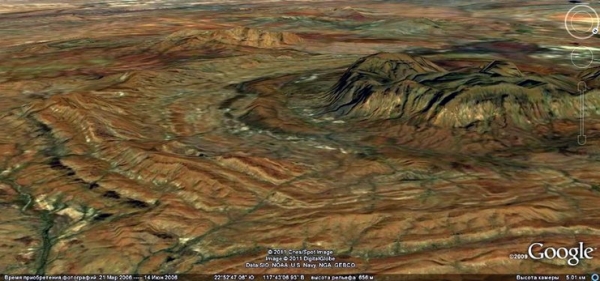
The granite gneiss dome age of 3.7 billion years in North-Western Australia
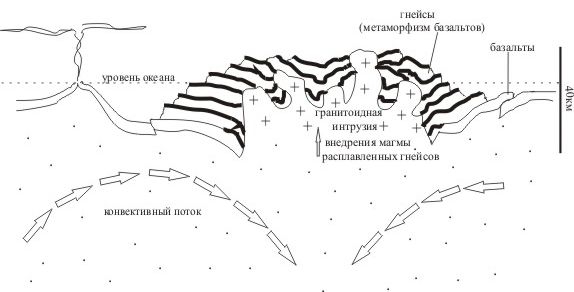
The formation of the granite gneiss dome
The granite gneiss dome was the germ of the future continental plates that make up the modern continents. With that continental crust formed by 70-75% in the Archean EON to the turn in 2.5 billion years.
In the Archean EON – the earliest stage of development of the Earth, the continental lithosphere was formed through two main tectonic processes: the formation of a thin basaltic crust and its hummocking with subsequent metamorphism and melting of granitic rocks. Now similar processes occur in the lithosphere occur on our neighbor Venus. Judging by radar images of the surface, there is clearly distinguished patterns similar to earth’s deep rift faults and mid-ocean ridges, but there are no modern structures of the earth’s zones podviga plates. On Venus have the extension of the zone of crowding of crustal plates with the characteristic scales of structures in the form of long ridges flowing across a hilly plateau, strongly reminiscent of earth’s granite-gneiss domes and shafts. So looks like Venus, the region of articulation of the Lakshmi plateau with mountains of Maxwell. The boundary between the plateau and the mountains looks like a sharp transition from the plain to the plateau to the steep slope of the mountains Maxwell, reaching a height of 11 km.
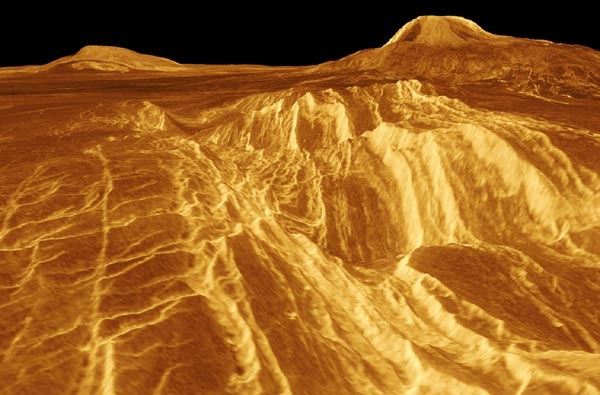
Mount Maxwell on Venus in its structure is very earth-like granite-gneiss domes of Archean
Evolution of continents directly correlated with the evolution of convective flows in subsoil. According to the research, including computer modeling of the development of convection of the mantle, science came to the conclusion that the most important events in the history of the earth’s convection, and, perhaps, in the history of the Earth as a whole, are changing the mode of convective cycles with stacked multi-cell to single-cell single-stage mode. For the first time it happened in the Archean – then a system with multiple upstream and downstream was replaced by a system with multiple ascending flow and one downflow – superbalanced. In the cell above downward superpotato occurred collision, where all of the first continental plate, which is a complex collage granitogrese domes and shafts. So at the turn of the Archean and Proterozoic, approximately 2.6 billion years ago were formed the first single supercontinent of the Earth – Monagea.
The first change of convective mode was stimulated the most intense in the history of the Earth period the earth’s core isolation and was accompanied by a Grand magmatic processes. Further regime change were more relaxed in nature.

Likely, the pattern of convection in the earth’s mantle has a dual character — system obsenities convection gives way to a bunk. That is, at some time in the upper and the lower mantle are formed convective the cycles of substances separate from each other. Probably in the planet’s history there were 4 shifts bunk convection on obseleting and during each shift was beginning to form the supercontinent.
After the first obseleting circulation system is split into a two-tier convection oven with many cycles in both tiers. Mnogochastny and the versatility of convection currents caused the breakup of the supercontinent.
Hundreds of millions of years of existence of a two-tier system of lower mantle overheated, due to the fact that the layer of the upper mantle hindered the heat transfer in the lower layer. At the same time, upper mantle SuperCool. The result was a critical moment, when chilled heavy mass of the upper mantle began to drop to the core, and the hot mass the lower mantle to rise up. There was a mutual substitution of matter upper and the lower mantle – this process received the name of Overton. The cooled substance was again immersed in a single flow-supervene and hot lower mantle substance was raised in the form of one or more threads. Like last time over superbalanced formed another supercontinent planet – Megahee. The birth of a new supercontinent was about 1.9-1.8 billion years ago.
1000 million years ago after the following Overton formed the supercontinent Rodinia (Mesogea). The last, fourth supercontinent in Earth’s history — Pangaea existed from the middle Permian period (roughly 270 million years ago) to early Jurassic 200 million years ago.
The time of formation of supercontinents, Monagea, Megahey, Rodinia and Pangaea should be compared with the times taken to complete tectonic Ayr: Minoranskii 2600 ± 100 billion years ago, svecofenno 1800 ± 100 billion years, Grenville – 1000 ± 70 billion years and Hercynian 230 million years ago.
Currently the Earth is experiencing an era of bunk convection. Before the emergence of the fifth supercontinent probably only has about 250 million years.
Evolution of the lithosphere
As the evolution of the convective system was formed earth’s lithosphere – the top one hundred km shell of the planet. Currently the earth’s lithosphere is divided into two types – oceanic and continental. Oceanic lithosphere is flooded by the oceans and is composed of plates composed of effusive rocks, covered with a thin layer of sediments, and metamorphic rocks – altered rocks. Continental lithosphere is the continents, which reduced parts – the shelves, partly covered by ocean. Continents composed of effusive, Intrusive, metamorphic (among which the most common are granulites, amphibolites, gneisses, various schists and serpentinites) and, to a lesser extent, sedimentary rocks.
The average power of the continental lithosphere is 100 km and the continental crust is 40 km; the average power of the oceanic lithosphere is 50 km, the oceanic crust is 6км.
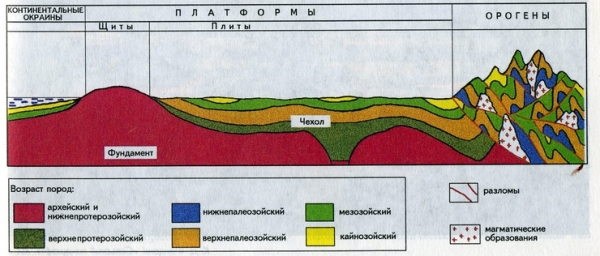
The continents consist of plates. Shields are exits to the surface of the ancient basement (Archean and Proterozoic age). The case is the later strata of rocks of different origin. Platform – weak damaged plate tectonic forces. The orogens is a mountainous region with active tectonic regime. itsovet.ru
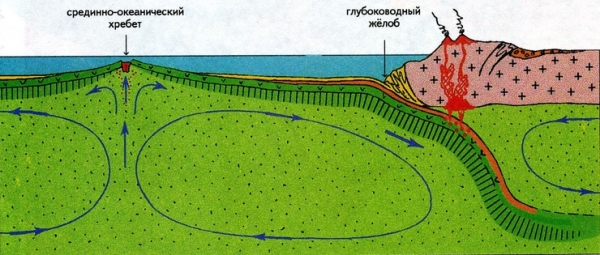
The spreading zone in mid-ocean ridge and a subduction zone where the oceanic plate and the continent. The subduction zone in the relief expressed the deep trough and often, the pile of cut sedimentary layers (yellow). The power of ocean precipitation varies from 0 to 1000 m (average 500 m), the thickness of the basaltic layer of the oceanic plates – 2-2. 5 km, and underlying basalts gabbro-serpentinite layer – 4-4,5 km of the Oceanic plate dive beneath the continent is partially melted. Magma is molten rock that rises up proplase thickness of the continental plate. itsovet.ru
How did the expansion of the breadth and depth of the lithospheric layer? This is the most difficult question in Geology. There are more hypotheses than concrete knowledge.
The formation of new oceanic crust mostly occurs when rising mantle material at Mid-oceanic ridges, the axes of which represent deep faults through which magma flows. Plates move apart from the axis of the rift to the opposite side, and a gaping rift filled regularly with fresh lava – this process is called spreading. Under oceanic plates at depths of 40-60km mantle substance in solid, but in a very plastic state spread in the horizontal direction in the side of the ascending convective flows. As the movement of the mantle mass of the substance cools, solidifies and peredaetsa to the base of lithospheric plates. In addition the mantle substance reaches depths of about 80 km due to the fall in pressure may be watered with a turn to magma and some of magma poured on the surface of the ocean floor forming underwater mountain ranges.
In the middle of the Archean, after a sharp decline in tectonic activity of the Earth about 3.2 billion years ago was formed the conditions of formation of the lithosphere, which are the main the last 2 billion years. These conditions led to the processes of podviga plate – subduction. Subductionis the process of oceanic plates dive under oceanic and continental plates in accordance with the directions of convection currents. In the depths of the oceanic mantle lithosphere is almost entirely melted, and thus, there is a continuous conveyor process of origin and disappearance of oceanic plates, which makes the oceanic lithosphere to build up considerable power. Because there is no bottom of the ocean ancient 156 million years. However, subduction zones are often located volcanic chain in the form of arcs, where an outpouring of significant volumes of lava. The origin of these volcanoes is associated with the melting of the plates sinking into the mantle. Some rocks released below the plates is melted in the mantle at a depth of 10-60km and climbs back up in the form of drops of magma, saturated with fluids (liquid and gases), which proplast opposing plate.
A similar but much more complex and multifaceted processes of thickening of the lithosphere by mantle material welded to the sole plates and due to the volcanoes and continents. The continents, unlike the oceanic plates in very rare cases subdocroot into the mantle. Continental lithosphere is less dense and has greater buoyancy, which allows it to last for billions of years and increase my power and size.
In the Archean, between 4 and 2.5 billion years ago continental lithosphere, along with the formation of the granite gneiss domes, was characterized by the formation of so-called Greenstone belts consisting of series with one powerful volcanic layer, covered with a debris pile of rocks. Currently Greenstone belt preserved in the basins of the longitudinal width of typically 10-15km and a length of 100-300km between a dome-shaped granite-gneiss bodies. The observed and estimated power zones are usually more than 10-20km. It is believed that there were at least two main periods of development of Greenstone belts: 3.6 to 3.2 and 2.8 to 2.6 billion years ago. The origin of Greenstone belts is also a controversial issue, but overall looks like a process fault primary gneissic continental crust, where developed turbulent volcanic activity with the deposition of igneous sedimentary and volcanic rocks occasionally with overlying clastic rocks of the sides of faults.
In the Proterozoic EON of the planet widespread the processes of subduction and in the last 2.5 billion years of continental lithosphere increases its size and thickness in the main due to the subduction-related volcanism. Modern the speed of increase of the cortex in all subduction zones is 1.1 cubic km per year, and the sinking velocity of the slab released below can reach 10cm per year. At the same time as the movement of oceanic plates, a volcanic arc and other volcanic Islands of the oceans can be cut against the mainland from the surface of the plates and welded to the continents.
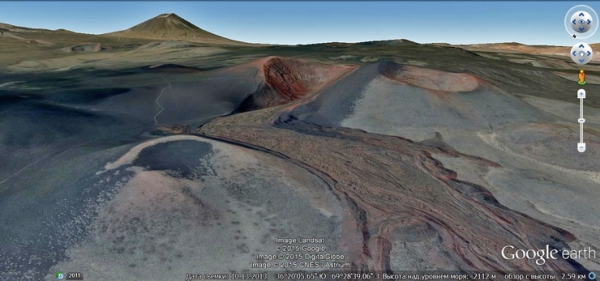
South American Andes is a good example of increasing the capacity of the continent by the processes of subduction. Here the volcanoes reach heights of nearly 7 km above sea level and the outpouring of lava and the deposition of huge masses of volcanic ash are a smaller part of the proceeds of volcanic material. In the depths of the Andes occur even more ambitious magmatic phenomena with the formation of not only volcanic (effusive) rocks, but Intrusive.
Sometimes when subduction of the oceanic plate sinks under the continent and coming to the mainland, where it remains forever. Such thrust over the oceanic plate called the ophiolite.
The formation of the hydrosphere
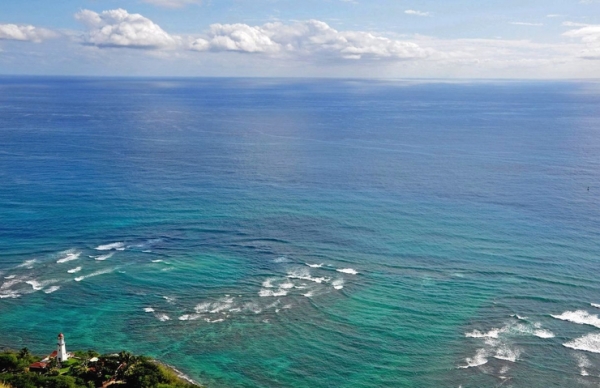
The Pacific ocean near the Hawaiian Islands. Photo Alexander Babkin
The degassing process of the mantle, i.e. the allocation of liquids and gases from rocks, is the primary source of free water. The allocation of water has been and is to date mainly during the ascent of basaltic melts and their outpourings at mid-ocean ridges.
In the oceans of the Earth now contains 1341 million cubic km of water.
Degassing of the Earth’s interior began after the melting of the earth substances and the occurrence of the first convective flows.
When rising basaltic melts to the earth’s surface the water entering into the composition of the basaltic magma, began to stand out upon cooling and solidification of the melt and the pressure drop, and in the outpouring of basalts at the surface, lava is literally boiling, evaporation into the atmosphere of volatile elements and compounds.
Of mantle material the water concentration does not exceed 0.06%, but at 4 billion years of outgassing, water stood out enough to fill the ocean basin, pour the continental shelves and saturating the atmosphere, where moisture condenses and over billions of years falls on the surface of the inland basin filling and capping mountain and polar region ice. In addition much of the water is absorbed again rocks during reactions of hydration, mostly in the rift faults of the spreading zones of mid-oceanic ridges. But through millions of years, water from rocks returns to the surface of the planet by melting the plates sinking in subduction zones as a result of reactions of dehydration.
The global sea level history was changed. At the turn of the Archean and Proterozoic, 2.5 billion years ago, ocean water completely blocked the mid-ocean ridges – and then increased the absorption (hydration) of the rocks of the oceanic crust and the oceans ceased to rise. In Archean Earth’s history oceanic ridges flooding occurred three times. First time – in the early Archean, about 3.6 billion years ago, the second time – at the beginning of the late Archean to 3.1–3.0 billion years ago, and for the third time – in the early Proterozoic, some 2.2 billion years ago.
New rises of sea levels caused either by increased excretion of water in subduction zones, or abrupt change in the tectonic activity of the Earth, which led to increased flow of magma at mid-ocean ridges and, consequently, higher volume and altitude ranges.
With the advent of the epochs of glaciation there is another factor in the fluctuation of ocean glaciers. The more water was held down in the glaciers, the lower was the level of the ocean.
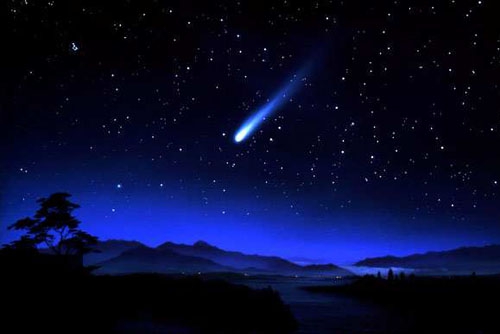
At one time it was assumed that the second most important source of water could be icy comets bombarding the Earth in the early stages of its development. However, studies of water vapor of comets have shown that comet water earth and water have a different composition – proportion of heavy hydrogen, or deuterium, in the composition of water vapor in comet far exceeds its share in the water on the Ground and then comet could not be the suppliers at least a significant amount of water.

The earth is an active planet, despite its solid age – 4 billion 520 million years. In the future, according to the hypothesis of geologists, the Earth is awaiting the formation of another megamerica – hypothetical Hypergeo and accordingly the next magakian of Hyperacidity. Probably Hypergeo in the more distant future will collapse as a result of changing the mode of convection in the mantle.
Will our planet have enough energy to make the next supercontinent after Hypergeo? Now geologists are inclined to think – no, not enough. Approximately 1.5 billion years the Earth is waiting for the depletion of endogenous energy and tectonic death.




